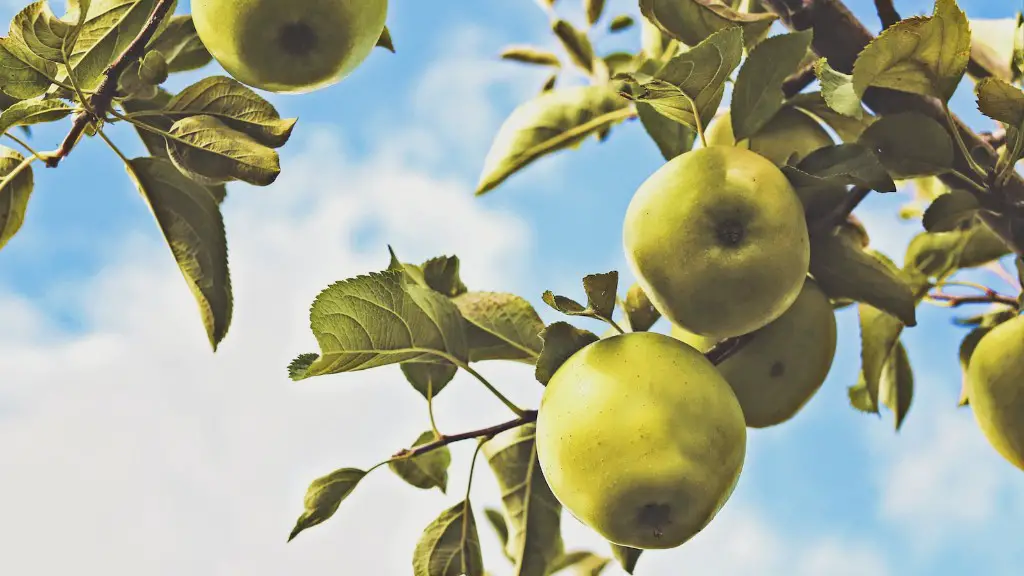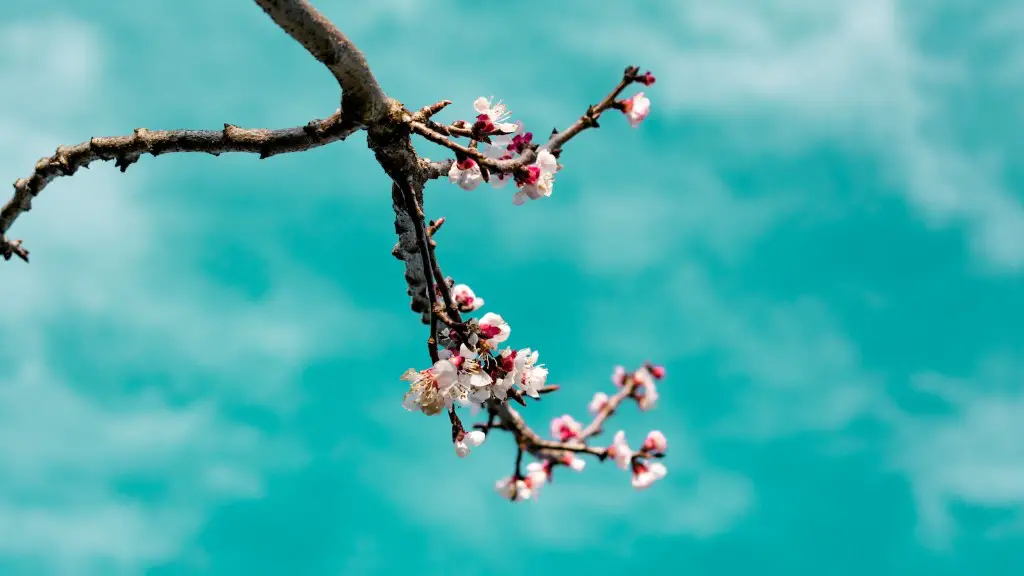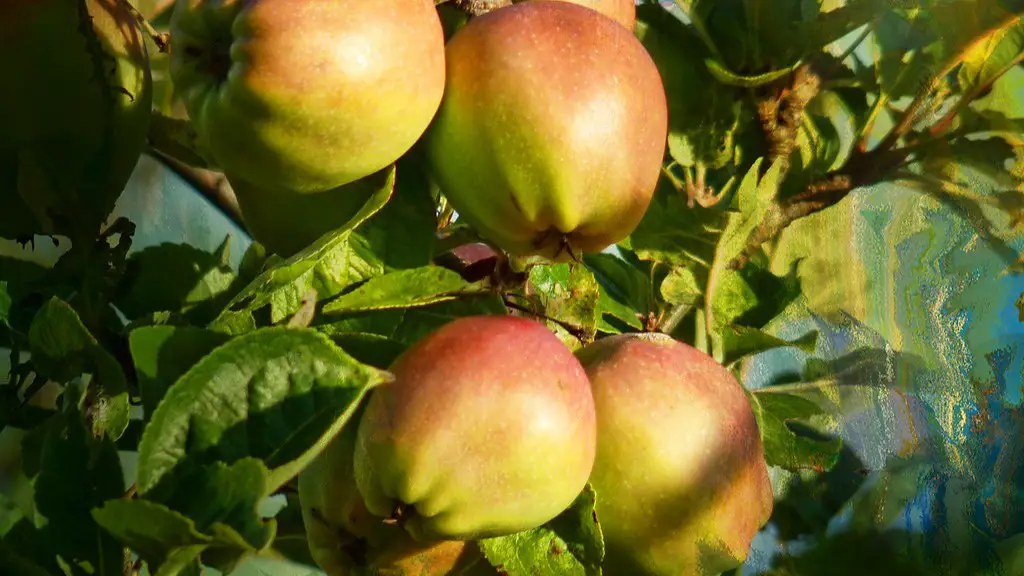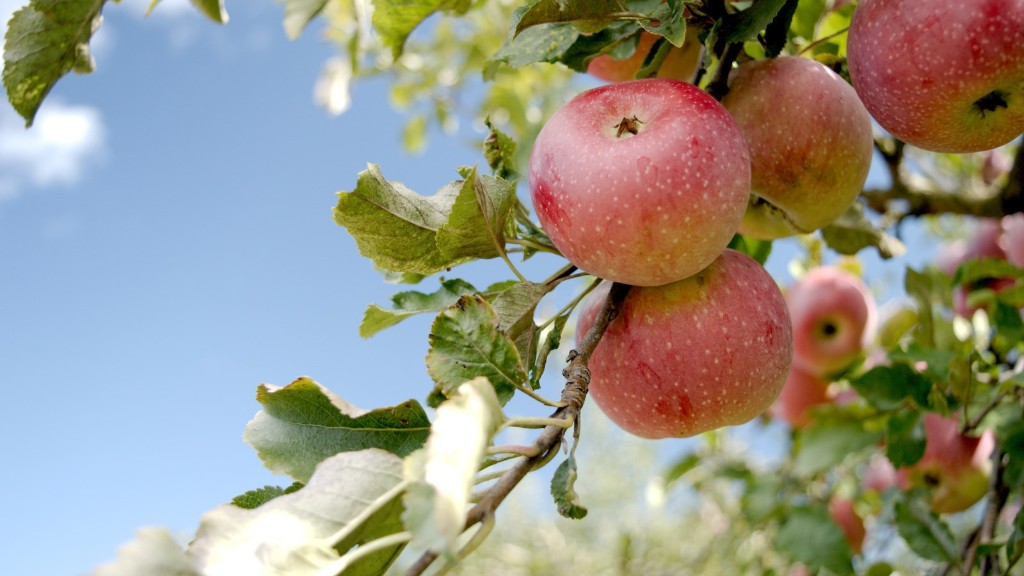Growing a dwarf apple tree can be a challenging yet rewarding task. To help you get started, here is some advice on how best to grow a dwarf apple tree. Firstly, pick a good site to plant your tree. Look for a location that has well-drained, fertile soil and is either in full sun or partial shade. Once you’ve selected the site, you’ll need to dig a hole that is 1-2 feet deep, allowing room for the roots to spread out and the tree to grow.
Next, it’s important to get the right type of apple tree for your location. Dwarf apple trees require less pruning and can be susceptible to certain diseases, so it’s important to choose one that is suited to the specific climate and soil type in your area.
Once you’ve picked the right tree, you’ll need to prepare the planting area. This involves loosening the soil with a shovel, adding some fertilizer, and removing any rocks or weeds that might inhibit the growth of the tree. Then, carefully place the roots into the hole and make sure they are covered with the loosened soil.
Water is essential for the health of a dwarf apple tree. Make sure to water it thoroughly, especially during dry spells. It’s also important to regularly mulch the base of the tree to keep the moisture in the soil and to keep weeds from growing.
Finally, prune the tree regularly to ensure that it stays healthy and grows the way that you want it to. Pruning involves removing branches and dead leaves, as well as shaping the overall form of the tree. By taking these steps, you can ensure that your dwarf apple tree will grow and flourish for years to come.
Nuetritional Value of a Dwarf Apple Tree
Apples are rich in vitamins and minerals and have a number of health benefits. Apples are a good source of fiber, Vitamin C and Potassium. They also contain antioxidants that can help protect against cancer, heart disease and diabetes. Apples grown on a dwarf apple tree generally have the same nutritional value as those grown on a full-grown tree. The only difference is that they tend to be smaller, so they will have a higher concentration of the vitamins and minerals.
Eating apples from a dwarf apple tree can also help boost your immune system. Apples contain flavonoids and phytonutrients, which can help fight off infections and reduce inflammation. Apples can also reduce cholesterol levels, as well as help regulate blood sugar levels. This can lead to better overall health, and might even help lower your risk for certain diseases.
So, not only are dwarf apple trees easier to care for, they are also great for your health. Enjoying apples from your own dwarf apple tree is a great way to reap the benefits of the nutrition contained in these delicious fruits.
Diseases in a Dwarf Apple Tree
Unfortunately, like any type of tree, a dwarf apple tree is susceptible to certain diseases. The most common diseases include scab and fire blight. Scab is caused by a fungus and can cause the apples to become mottled, while fire blight is a bacterial infection that causes black and brown tips on the leaves and fruits.
It is important to keep an eye out for any signs of disease and to take measures to prevent or treat them as soon as possible. This involves checking the leaves, bark, and fruits for any signs of discoloration, spotting, or abnormal growth patterns. Watering the tree at the base and avoiding late night watering can also help manage both scab and fire blight.
It is also important to apply a fungicide or insecticide to the tree according to the manufacturer’s instructions. This will help keep the tree healthy and reduce the chances of disease. Finally, pruning the tree regularly and removing any diseased branches and leaves is essential for preventing further spread of the disease.
Important Maintenance and Care for Dwarf Apple Tree
Along with keeping your dwarf apple tree disease free, it is also important to provide it with the proper maintenance and care. This includes pruning, watering, and fertilizing. Pruning should be done regularly to control the size and shape of the tree, as well as to remove any dead or diseased branches. You should also water the tree at least once a week during dry periods, or as needed.
Fertilizing is also an important part of caring for a dwarf apple tree. Fertilizing will help promote healthy growth, as well as encourage more fruit production. When fertilizing, be sure to use a fertilizer specifically designed for apple trees and follow the instructions on the package.
In addition to pruning, watering, and fertilizing, it is also important to make sure that your dwarf apple tree is protected from extreme temperatures and harsh weather. During cold winter months, cover the tree with a layer of mulch or burlap to keep it warm. During hot summer months, make sure to provide enough shade to help protect the tree from the sun’s heat.
The Benefits of Growing a Dwarf Apple Tree
Growing a dwarf apple tree has many benefits, including the fact that they are smaller and easier to care for. They also require less pruning and can be planted in nearly any type of soil. Dwarf apple trees also produce an abundance of delicious apples that can be used for baking, juicing, or just plain eating.
You can also enjoy the beauty of a dwarf apple tree in your yard. Dwarf apple trees are hardy and can survive in a wide range of climates and soils. They look beautiful when they are in bloom, and they can also add a nice touch of color to any outdoor space.
Finally, growing a dwarf apple tree is an excellent way to reduce your carbon footprint. Apples are a great source of sustenance, but they also create by-products in the form of peels, cores, and stems. By cultivating your own dwarf apple tree, you can reduce your reliance on store-bought apples and minimize the overall waste in the process.
Harvesting and Preserving Apples From a Dwarf Apple Tree
Harvesting apples from a dwarf apple tree is similar to harvesting from any other apple tree. Apples should be picked when they are ripe, usually between late summer and early fall. The best way to determine ripeness is to look for apples that are slightly soft with a nice red color.
Once you have harvested your apples, it is important to store them properly to minimize their deterioration. Apples can be either stored in the refrigerator or in a cool and dry place. Refrigerated apples can last for about two weeks, while apples stored in a cool and dry place can last up to three to five months.
Preserving apples is also a great way to enjoy them during the winter months when they aren’t in season. Apples can be preserved in a variety of ways, such as canning, freezing, drying, or even making apple cider vinegar. These preserved apples will last several months and can be used in a multitude of recipes throughout the year.
Tips for Planting a Dwarf Apple Tree
Planting a dwarf apple tree is a relatively easy task, but there are a few tips that you should keep in mind before getting started. Firstly, make sure to choose a dwarf apple tree that is suited for the climate and soil type in your area. Once you’ve picked the right tree, prepare the planting area by loosening the soil, adding fertilizer, and removing any rocks or weeds.
Watering is another important step when planting a dwarf apple tree. Make sure to water the tree regularly, especially during dry spells, and mulch the base of the tree to keep the soil moist and weed-free. Prune the tree regularly to ensure that it grows the way that you want it to.
Finally, make sure to protect the tree from extreme temperatures and harsh weather. Cover the tree in the winter to keep it warm, and provide some shade in the summer to help protect it from the sun’s heat. By following these tips, you can ensure that your dwarf apple tree will grow and flourish.




